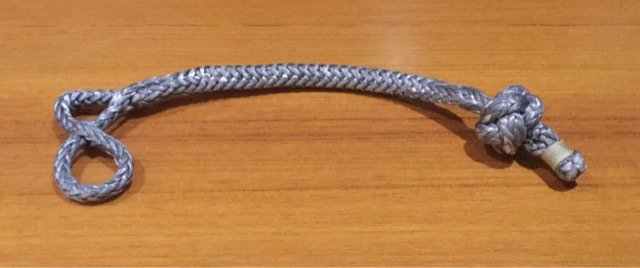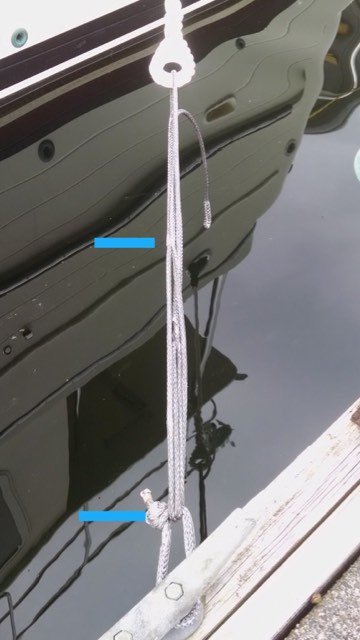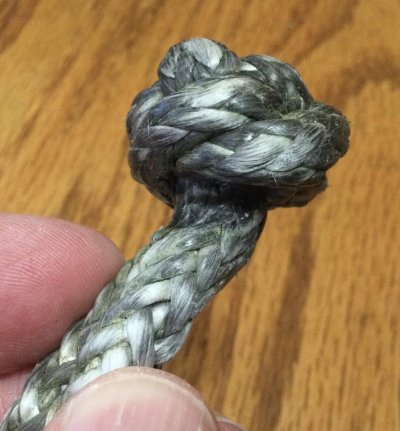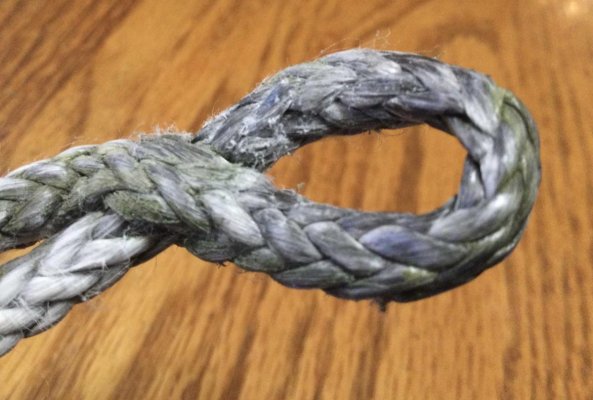dhays
Guru
- Joined
- May 26, 2015
- Messages
- 9,575
- Location
- Gig Harbor, WA
- Vessel Name
- Kinship
- Vessel Make
- 2010 North Pacific 43
In another thread I talked about trying a new system for my dock lines at my home slip. The 3/4" three strand that were there were started to get very chaffed, partly because I had to put two lines on the same cleat a couple places and the cleats aren't really sized for that.


It also meant a lot of line on the dock. I tried to keep it neat but the line just collects dirt.
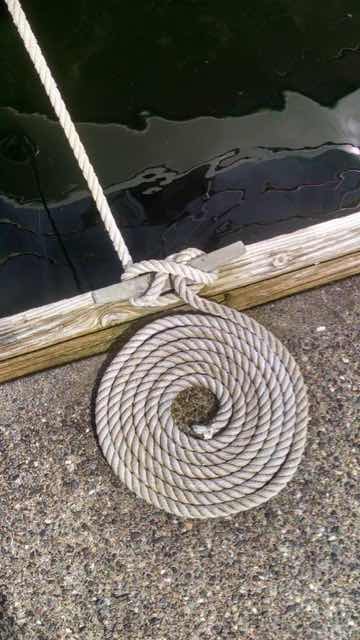
So that was what I didn't like. I decided to try something different. I did get the eBay 5/8" nylon three strand. 600' for $250. I figured even if it was cheap and didn't wear well, I could just make up new lines.
I also got some 2" wide climbing spec tubular webbing to use as chafe protection on the boat side. 1 1/2" would have been better for the spliced eyes, but it was expensive. I got 150' of the 2" for $100.
I bought some nylon 5/8" thimbles from Defender. I don't recall how much they cost, but at least those I can reuse.
Finally, I made up dyneema soft shackles. I already had the dyneema but making up these and the continuous loops I made for my anchor had just about depleted my 3/16" dyneema. I had had it for a number of years, using it for my sailboat. I ordered some more just to have it, $30 for 50'. That will last me another 10 years.
So, $400 in materials. Yes, I KNOW I COULD HAVE BOUGHT DOCKLINES FROM WM FOR LESS. However, I have enough material to make dock lines for years, not to mention anchor bridles, snubber etc... Besides, I think my system will end up being better.


It also meant a lot of line on the dock. I tried to keep it neat but the line just collects dirt.

So that was what I didn't like. I decided to try something different. I did get the eBay 5/8" nylon three strand. 600' for $250. I figured even if it was cheap and didn't wear well, I could just make up new lines.
I also got some 2" wide climbing spec tubular webbing to use as chafe protection on the boat side. 1 1/2" would have been better for the spliced eyes, but it was expensive. I got 150' of the 2" for $100.
I bought some nylon 5/8" thimbles from Defender. I don't recall how much they cost, but at least those I can reuse.
Finally, I made up dyneema soft shackles. I already had the dyneema but making up these and the continuous loops I made for my anchor had just about depleted my 3/16" dyneema. I had had it for a number of years, using it for my sailboat. I ordered some more just to have it, $30 for 50'. That will last me another 10 years.
So, $400 in materials. Yes, I KNOW I COULD HAVE BOUGHT DOCKLINES FROM WM FOR LESS. However, I have enough material to make dock lines for years, not to mention anchor bridles, snubber etc... Besides, I think my system will end up being better.


